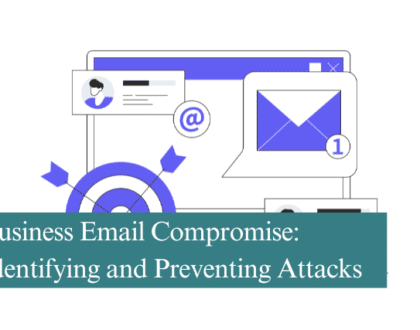
IT is fast becoming essential for most businesses, especially for those that have hybrid and remote workers. With the growth of hybrid and remote working, companies across industries from large to small are beginning to understand the necessity of IT services.
However, some businesses are finding it a challenge to allocate funds for an IT budget. The goal is to create and implement an IT budget right for your business. It’s necessary to create an IT strategy and best practices that work for your business and develop a budget that allows your company to reach its IT goals.
Effective IT Budgeting
There are several questions to answer when developing an effective IT budget, including:
- How big should your budget be to support your business requirements now and into the future?
- Where does your IT infrastructure need to increase spending? Where could expenses potentially be trimmed?
- How should funds be divided and allocated for maximum impact on the business across different IT areas, such as:
- Software
- Hardware
- Data storage
- Support services
- Staff costs & training
What IT processes are going to be more cost-effective to outsource?
The answers to these questions will vary for each business. There’s no template to calculate an IT budget for your small business. Each small business has its own unique requirements when it comes to its IT requirements, the company’s size, industry, the types of products & services offered, and more.
The most effective way to find how much to budget for IT is an audit. The IT audit should assess the company’s needs rather than treating an IT budget as a cost-calculation issue. Instead, this is the right time to optimise value and IT expenditure. This process ultimately optimises your entire IT infrastructure and processes.
On the other hand, without an IT budget, your business has no clear idea of what’s spent on IT services. Leaving your company in the dark doesn’t help regulate expenses or use capital more effectively. This is a good way to waste money and decrease ROI.
When & How Often is It Necessary to Do an IT Budget?
The answer fully depends on your specific business. However, it’s clear that IT budgeting should be done on a regular basis. For some companies, a yearly review of the IT budget may be enough. Even so, most businesses may find it more beneficial to review their IT budgets more often, at shorter intervals. You may want to consider quarterly and bi-annual reviews.
In addition, tracking and plotting performance at regular intervals also helps you make better decisions when it comes to IT budgeting. What’s more, it’s essential to remember that IT systems are changing at lightning speeds. It’s essential to allow for changes in potential costs to rise or fall for some IT technologies and services.
What to Consider During the IT Budgeting Process?
Each business is unique and needs to structure its IT budgets differently, depending on the needs of its operation, processes, products & services. No two companies will have precisely the same technologies, software, and hardware.
However, we’ve put together some guidelines you can follow for items to include on your IT budget. These expenses are ongoing and vary from company to company:
Personal costs: costs involved with recruiting, compensating, and training in-house IT staff.
Hardware costs: all hardware costs are involved with keeping the business functioning. Hardware costs usually include servers, employee devices, network infrastructure, and maintenance contracts (with third-party IT management services, for instance)
Software costs: these costs deal with licensing or paying subscriptions for software services, such as SaaS (Software as a Service), such as marketing, financial, and HR applications.
Project expenses: these expenses are tied to specific projects. For instance, if you need to hire a contractor or consultant, invest in temporary software, hardware, or office space to meet the requirements for a project. These expenses can also be divided per project.
Emergency expenses: this is a reserve fund that can be used for major, unexpected IT expenses. For instance, cleaning up after a cyberattack or a disaster recovery situation.
In addition to these considerations, there are specific factors to consider for your own company. And remember that IT systems are evolving at a quick pace. Businesses must bear this in mind and create an allowance for potential changes to their IT services and infrastructure.
Best Practices for IT Budgeting
Now that you have the basics of creating an IT budget, it’s essential to know what that budget needs to include. When you’re going through this process, it’s normal to wonder how to make sure your budget is accurate. We’ve put together some best practices and tips to help you develop the right IT budget for your business.
- Identify & Categorise IT Expenses
The first place to start is by creating an inventory of your current IT assets. Ensure the assets are structured and contained in a logical format.
Creating a list of current assets allows you to prioritise, allocate, and track expenses in specific areas and across the business.
In addition, knowing the company’s current assets also helps you determine hardware, software, and other pieces that may be missing from the system.
- Review Previous Budgets
Giving previous budgets a good going over is another way to see what was done right or wrong in the past. This is an excellent exercise to determine future budgets and ensure they’re more accurate.
The information gained from examining previous IT budgets also allows you to track long-term trends and make better IT investments in the future.
- Don’t Be Too Rigid
Another consideration is to ensure your budget is flexible enough to take care of emergencies when they happen.
- Establish Roles
Finally, remember to establish and assign roles to make it clear who is responsible for your IT services. For instance, this may include who takes care of authorising and releasing IT funds and more.
Establishing roles is a great way to avoid misunderstandings in the future. Each person/role knows what they’re responsible for and others in the business know who to contact for specific issues.
Concluding Thoughts
Creating a budget for your IT services can be challenging. It does take work and research to develop an accurate budget. However, when you have the right budget in place, your company will be ready to deal with new technology, issues, and more.
Recommended Posts

Is There a Difference Between Managed IT and IT Support?
13th June 2025


